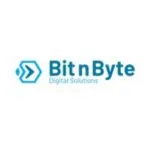
Top Influencer Marketing Companies
The global influencer marketing industry is projected to reach $24 billion in 2025, growing significantly. Source: Global influencer marketing industry to reach $24 billion in 2025, report – MarketingReport.
Influencer marketing companies help brands grow by connecting them with the right influencers to reach their target audience effectively. These agencies specialize in creating strategic campaigns, managing influencer relationships, and tracking performance across platforms like Instagram, YouTube, TikTok, and LinkedIn. Whether you’re launching a new product or building brand awareness, top influencer marketing companies provide creative direction, content collaboration, and data-driven insights to maximize ROI. From micro-influencers to global celebrities, these firms help businesses of all sizes build credibility and engagement through authentic, trusted voices. Explore the leading agencies that turn influencer partnerships into powerful marketing results.
List of the Best Influencer Marketing Agencies | Top Influencer Marketing Companies in the World

-
Employees: 101 to 250
-
Min. Project amount: $5,000+
-
Country: South Jordan, USA

Crescaler
-
Employees: 11 to 50
-
Min. Project amount: Undisclosed
-
Country: Ambala, India

Bit n Byte
-
Employees: 11 to 50
-
Min. Project amount: $1,000+
-
Country: Lahore, Pakistan

21Twelve Interactive LLP
-
Employees: 11 to 50
-
Min. Project amount: $1,000+
-
Country: Ahmedabad, India

Dataintelo
-
Employees: 101 to 250
-
Min. Project amount: Undisclosed
-
Country: Ontario, CA

Designers X
-
Employees: 11 to 50
-
Min. Project amount: $10,000+
-
Country: Florida, United States

MediaNV
-
Employees: 51 to 100
-
Min. Project amount: $1,000+
-
Country: Calgary, Canada

Atlas SoftWeb
-
Employees: 51-100
-
Min. Project amount: $10,000+
-
Country: 413, Palladium Business Hub, Visat – Gandhinagar Highway, Opp 4D square Mall, Chandkheda Ahmedabad, India 380005
Mr. Marketing® SEO
-
Employees: 11 to 50
-
Min. Project amount: $ 25000
-
Country: USA
Proleo.io
-
Employees: 11 to 50
-
Min. Project amount: $ 25000
-
Country: NJ, US
1.What Services Do Influencer Marketing Companies Offer?
Influencer‑focused agencies typically act as full‑service partners, handling every stage of a campaign from concept to reporting. Below is a breakdown of the most common (and most useful) service categories.
1. Strategy & Campaign Planning
Audience research & persona mapping: Determine who you need to reach, and where.
Channel selection & goal setting: Align KPIs (reach, engagement, conversions, sentiment) with budgets and platforms—e.g., Instagram for lifestyle, TikTok for Gen Z, LinkedIn for B2B.
Creative concepting: Develop campaign themes, storytelling angles, and content formats (Reels, long‑form YouTube, newsletters, podcasts, etc.).
2. Influencer Discovery, Vetting & Contracting
Database & network access: Tap into thousands of creators across niches, follower sizes, and geographies.
Authenticity & brand‑fit checks: Analyze past content, audience demographics, engagement authenticity, and brand‑safety risks.
Rate negotiation & contracts: Handle deliverables, usage rights, exclusivity, FTC/ASA disclosure language, payment terms, and tax paperwork.
3. Content Production & Creative Direction
Briefing & mood‑boards: Provide influencers with detailed guidelines while preserving their voice.
On‑site or remote shoots: Coordinate photographers, videographers, stylists, and locations when higher production value is needed.
Editing & approvals: Review drafts for compliance, brand consistency, and platform‑specific specs before posts go live.
4. Campaign Activation & Management
Scheduling & publishing: Manage posting calendars, whitelisting, and embargoes.
Paid amplification: Boost top‑performing influencer content through Spark/Branded Content ads to extend reach.
Cross‑channel roll‑outs: Sync organic, paid, email, PR, and offline touchpoints (events, pop‑ups, packaging inserts).
5. Compliance, Governance & Brand Safety
Disclosure monitoring: Ensure FTC, CMA, or ASA guidelines are followed (e.g., #ad, #sponsored, paid partnership labels).
Content moderation: Track comments, flag crises, and manage takedown requests.
Data privacy & usage rights: Handle GDPR/CCPA considerations, intellectual‑property licensing, and platform terms of service.
6. Measurement, Analytics & Optimization
Real‑time dashboards: Track impressions, clicks, watch‑time, swipe‑ups, coupon redemptions, and attributed sales.
Sentiment & social listening: Gauge audience response and brand perception shifts.
Post‑campaign reports & insights: Provide ROI calculations (CPE, CPM, CPA, ROAS), learnings, and recommendations for scaling.
7. Long‑Term Relationship & Community Programs
Ambassador programs: Convert one‑off collaborations into ongoing partnerships or affiliate models.
Product seeding & gifting: Systematically send new releases to nano/micro‑creators for authentic buzz.
Creator advisory councils: Involve key influencers in product development and feedback loops.
8. Ancillary & Integrated Services
Talent management: Some agencies also represent influencers, negotiating on their behalf.
Event amplification: Secure real‑time coverage at launches, trade shows, or brand activations.
Localization & global roll‑outs: Adapt creative to different languages, cultures, and regulatory environments.
Key Takeaway
Top influencer marketing companies aren’t just “matchmakers”—they are strategic partners that combine data, creativity, and end‑to‑end execution to turn influencer relationships into measurable business results.
2.What Platforms Do Influencer Marketing Companies Typically Work With?
Influencer marketing companies tailor their strategies across multiple platforms to match audience behavior, brand goals, and content formats. Here’s a breakdown of the most commonly used platforms:
1. Instagram
Why it’s popular: Visual-first, high engagement rates, ideal for lifestyle, fashion, food, travel, and beauty.
Content types: Stories, Reels, Feed posts, Carousels, Live videos
Use cases: Product showcases, giveaways, UGC campaigns, behind-the-scenes content
2. YouTube
Why it’s popular: Long-form storytelling, high viewer intent, strong SEO potential
Content types: Product reviews, tutorials, unboxings, vlogs, integrations
Use cases: Tech demos, beauty tutorials, travel vlogs, educational content
3. TikTok
Why it’s popular: Short, viral video content with unmatched organic reach among Gen Z and young millennials
Content types: Challenges, trends, skits, behind-the-scenes clips
Use cases: Quick product demos, branded challenges, viral storytelling
4. Facebook
Why it’s popular: Massive global user base, particularly effective for B2C brands targeting older audiences
Content types: Live videos, posts, groups, event promotion
Use cases: Community building, product launches, cross-generational outreach
5. LinkedIn
Why it’s popular: Professional, B2B-focused audience, ideal for thought leadership and employer branding
Content types: Articles, videos, long-form posts, polls
Use cases: SaaS, HR tech, business coaching, executive influence
6. Twitter (X)
Why it’s popular: Real-time conversation, news, and trend commentary
Content types: Threads, live event reactions, link sharing
Use cases: Event amplification, brand announcements, commentary on social issues
7. Pinterest
Why it’s popular: Discovery-driven, high intent for lifestyle and design categories
Content types: Pins, boards, idea pins
Use cases: Interior design, DIY, fashion, recipe content, affiliate linking
8. Twitch
Why it’s popular: Live-streaming, gaming-focused, with real-time audience interaction
Content types: Live game streaming, branded streams, sponsored shout-outs
Use cases: Gaming products, energy drinks, tech hardware
9. Blogs & Newsletters
Why it’s popular: Long-form, SEO-rich content with long lifespan
Content types: Reviews, how-to guides, interviews
Use cases: Product education, affiliate content, brand storytelling
✅ Conclusion
Influencer marketing companies work across a variety of platforms based on brand goals and target audience. From short-form viral videos on TikTok to long-form storytelling on YouTube and niche B2B posts on LinkedIn, these agencies help brands choose the right platform mix to maximize reach, relevance, and ROI.
Let me know if you want a platform comparison table or campaign examples per industry!
3.How Do I Choose the Right Influencer Marketing Agency for My Brand?
Selecting the right influencer marketing agency is crucial to achieving your marketing goals, staying within budget, and building authentic brand-influencer partnerships. Here’s how to make the best choice:
1. Define Your Goals and Budget
Before choosing an agency, clearly outline:
What you want to achieve: brand awareness, sales, engagement, UGC, lead generation
Who you want to target: demographics, regions, interests
Your budget: This helps narrow down agencies that specialize in small, mid-sized, or enterprise-level campaigns.
2. Look at Their Industry Experience
Choose an agency that has:
Proven experience in your niche (e.g., beauty, tech, fashion, health, B2B)
Case studies or examples showing they understand your audience
A portfolio of successful campaigns with measurable results
3. Check Their Influencer Network
Ask:
Do they have access to micro, macro, and celebrity influencers?
Can they target local, regional, or global audiences?
Do they offer cross-platform influencer options (Instagram, YouTube, TikTok, LinkedIn, etc.)?
The more diverse their talent pool, the more flexibility you’ll have.
4. Evaluate Their Strategy and Creative Approach
An effective agency should offer:
Data-driven influencer matching
Campaign ideation and creative direction
Brief development, messaging alignment, and storytelling expertise
Look for originality, brand-fit, and strong content production support.
5. Review Tracking & Reporting Capabilities
Make sure the agency provides:
Real-time campaign tracking dashboards
Post-campaign performance reports with KPIs like reach, engagement, and ROI
Insights and suggestions for improvement or scaling
Data transparency is critical for long-term success.
6. Ask About Legal and Compliance Support
Ensure the agency handles:
Contracts, deliverables, and payment
FTC compliance and disclosure monitoring
Content rights and usage terms
This protects your brand from legal risks.
7. Assess Communication & Support
Ask yourself:
Are they responsive and easy to communicate with?
Will you get a dedicated account manager?
Do they collaborate well with internal teams or external partners?
Smooth communication equals smoother campaigns.
✅ Bonus Tip:
Ask for a test campaign or short-term project before committing to a long-term contract. This lets you evaluate their performance and alignment with your brand.
Final Thought:
Choosing the right influencer marketing agency means balancing strategy, creativity, analytics, and fit. Take time to assess their capabilities, transparency, and understanding of your brand voice and goals.
Let me know if you’d like a comparison checklist or a list of top agencies by industry!
4.How Is ROI Measured in Influencer Marketing Campaigns?
Measuring ROI (Return on Investment) in influencer marketing helps brands understand the effectiveness and profitability of their campaigns. While financial returns are key, influencer marketing also delivers value through brand awareness, engagement, and trust-building.
Here’s how ROI is typically measured:
1. Define Your Goals First
Before measuring ROI, you must clarify your objectives. Common goals include:
Brand awareness
Audience engagement
Website traffic
Lead generation
Sales and conversions
Each goal requires a different set of metrics to evaluate success.
2. Track Quantitative Metrics
📊 Key Performance Indicators (KPIs) include:
Reach & Impressions: Total audience exposed to the content
Engagement Rate: Likes, comments, shares, saves (especially on Instagram, TikTok)
Click-Through Rate (CTR): Number of clicks divided by impressions or reach
Website Traffic: How many people visited your site through influencer links
Conversions/Sales: Purchases, sign-ups, or downloads directly attributed to the campaign
Cost Per Acquisition (CPA): Total campaign cost divided by number of conversions
Return on Ad Spend (ROAS): Revenue generated from influencer efforts divided by cost
3. Use Tracking Tools and Techniques
UTM Parameters: Track traffic from influencer posts in Google Analytics
Promo Codes & Affiliate Links: Attribute specific sales to individual influencers
Custom Landing Pages: Tailor pages to influencer traffic for precise tracking
Social Listening Tools: Monitor mentions, sentiment, and reach beyond direct clicks
4. Measure Qualitative Impact
Not all ROI is quantifiable. Influencer campaigns often:
Increase brand credibility and trust
Drive word-of-mouth buzz
Help generate high-quality user-generated content (UGC)
Improve brand sentiment
Surveys, polls, and social listening help assess this intangible value.
Frequently Asked Question
What is software development?
In simple words, software development refers to a planned process of creating computer programs using specific programming languages. The process with the set stages and steps for development includes software designing, development, software testing, and deployment. It has to abide by the standard software development lifecycle parameters (known as SDLC). The aim here is to address a distinct business goal through a logical set of functions.
What is the average cost of developing custom software?
There are various factors that decide the cost of custom software. Different regions have different developer work hour rates. However, the basic cost of custom software development is around $20,000-$25,000.
What are the payment models?
Pricing policies vary from one company to another. Most custom software development costs are billed in installments as the development life cycle stages come to an end. Often companies offer a fixed price that comes in a package including additional charges after post-launch.



